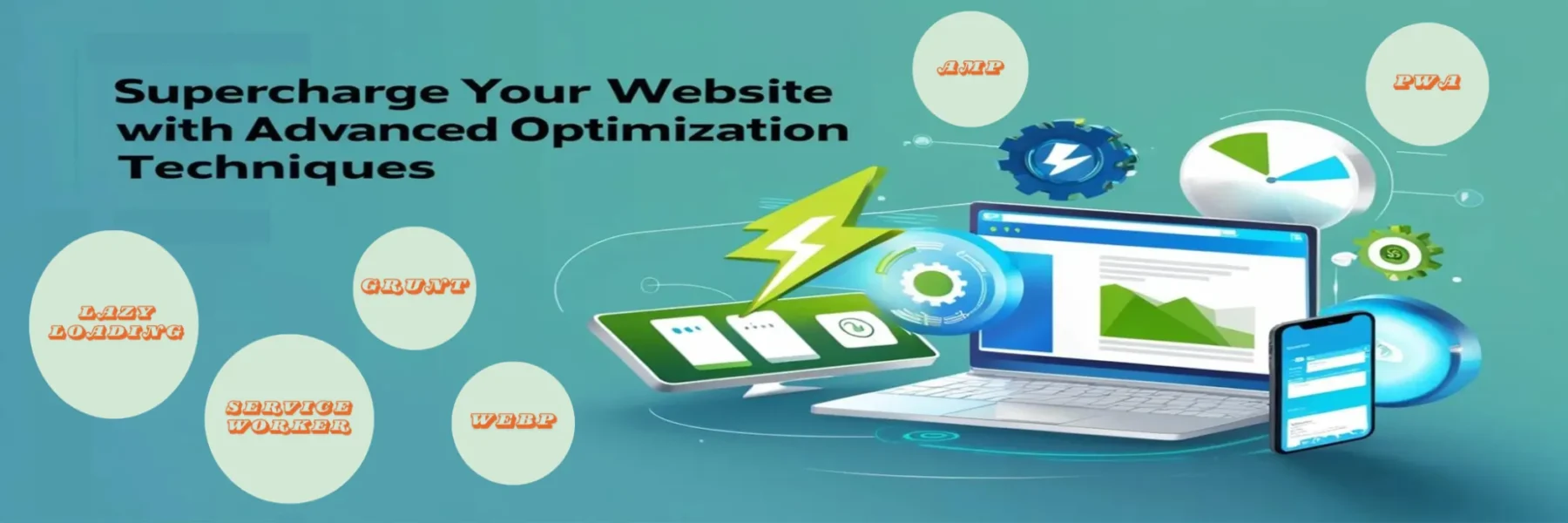Introduction
In today’s digital age, website optimization is crucial for providing a seamless and lightning-fast user experience. By implementing the latest technologies, you can enhance your website’s performance, reduce loading times, and boost user engagement. In this blog, we will explore step-by-step how to optimize your website using various cutting-edge techniques, including Grunt, WebP images, Google AMP, PWA, Service Worker, Lazy Loading, and Caching.
Step 1: Install Node.js and Grunt
Before we dive into optimization, make sure you have Node.js installed on your system. We’ll use Node.js to manage packages and dependencies. Once you have Node.js installed, install Grunt globally:
npm install -g grunt-cli
Step 2: Set Up Grunt for Task Automation
Create a Gruntfile.js in the root directory of your project to configure Grunt tasks. We’ll use Grunt for automating tasks like image optimization, CSS and JavaScript minification, and more.
module.exports = function(grunt) {
grunt.initConfig({
// Your Grunt configuration goes here
});
// Load Grunt plugins
grunt.loadNpmTasks('your-grunt-plugin');
// Add more Grunt plugins as needed
// Define the default Grunt task(s)
grunt.registerTask('default', ['task1', 'task2']);
};
Step 3: Optimize Images with WebP
WebP is a modern image format that offers better compression without compromising quality. Convert your images to WebP format and serve them to supported browsers.
npm install grunt-webp --save-dev
Add the following configuration to your Gruntfile.js to convert images to WebP:
module.exports = function(grunt) {
grunt.initConfig({
webp: {
dynamic: {
files: [{
expand: true,
cwd: 'src/images/',
src: ['**/*.{png,jpg,gif}'],
dest: 'dist/images/'
}]
}
}
});
grunt.loadNpmTasks('grunt-webp');
grunt.registerTask('default', ['webp']);
};
Step 4: Implement Google AMP (Accelerated Mobile Pages)
Google AMP is a framework that allows you to create fast-loading and mobile-friendly web pages. To implement Google AMP, follow the official documentation and include the necessary markup in your HTML files.
Step 5: Create a Progressive Web App (PWA)
Convert your website into a Progressive Web App to provide an app-like experience, even when users are offline. To create a PWA, add a manifest file and service worker to your project.
Step 6: Implement Service Worker
Service workers enable offline caching and improve website performance. Register a service worker in your HTML file and use it to cache static assets and provide offline support.
// Service Worker registration
if ('serviceWorker' in navigator) {
window.addEventListener('load', function() {
navigator.serviceWorker.register('/service-worker.js')
.then(function(registration) {
console.log('Service Worker registered with scope:', registration.scope);
}, function(err) {
console.log('Service Worker registration failed:', err);
});
});
}
Step 7: Implement Lazy Loading for Images
Lazy loading defers the loading of non-critical images until they are about to be displayed, reducing initial page load time.
<!-- Replace 'src' with 'data-src' --> <img data-src="image.jpg" alt="Lazy-loaded image">
Use JavaScript to load the images when they come into the viewport:
const images = document.querySelectorAll('img[data-src]');
function preloadImage(img) {
const src = img.getAttribute('data-src');
if (!src) return;
img.src = src;
}
const imgOptions = {
threshold: 0.5,
rootMargin: '0px 0px 100px 0px'
};
const imgObserver = new IntersectionObserver((entries, imgObserver) => {
entries.forEach(entry => {
if (!entry.isIntersecting) return;
preloadImage(entry.target);
imgObserver.unobserve(entry.target);
});
}, imgOptions);
images.forEach(image => {
imgObserver.observe(image);
});
Step 8: Implement Caching for Better Performance
Leverage browser caching by setting appropriate caching headers for static assets on your web server. This allows users to load your website faster after their initial visit.
Conclusion
By following these step-by-step guidelines and incorporating technologies like Grunt, WebP images, Google AMP, PWA, Service Worker, Lazy Loading, and Caching, you can drastically improve your website’s performance and provide a seamless user experience. Embrace the latest optimization techniques, and your website will be well-prepared to thrive in the competitive online landscape. Happy optimizing!

